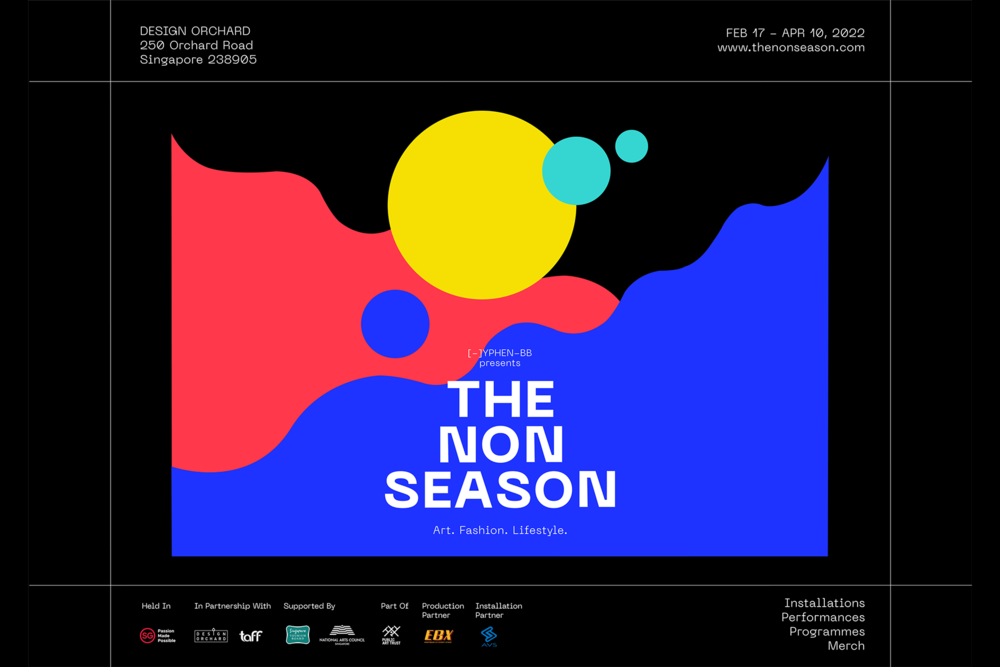President's Young Talent 2018: Five Singaporean Artists to Watch
The exhibition in its 7th edition at the Singapore Art Museum sets a strong example for diversity
By Ian Tee
The President's Young Talent (PYT) programme by the Singapore Art Museum seems to understand what a young artist needs. Now in its seventh edition, it is the nation's only mentoring, commissioning and award programme. The 2018 PYT exhibition presents the new work by five Singaporean contemporary artists developed under the guidance of a curator-mentor panel, two of whom are alumni of the 2013 edition: Grace Tan and Zaki Razak.
The six-month mentorship is a gestation period for new ideas, with intention of realising growth for both artists and curator-mentors. The process culminates with the final exhibition, where each work will be running for a grand prize of SGD20,000. For most artists, PYT is also their first major museum presentation.
Weixin Quek Chong, 'sft crsh ctrl' (detail), 2018, silk twill, latex, wood, silicone, vinyl, faux fur, paper, screens, aluminum and stainless steel, dimensions variable. Image courtesy of Singapore Art Museum.
Weixin Quek Chong
In her work 'sft crsh ctrl', Weixin Quek Chong juxtaposes the plasticity of digital interfaces with the tactility of evocative materials such as latex, vinyl and faux fur. These are surfaces that invite touch, as much as one's projection of meaning. Chong employs with a lexicon of material signs and affects, in a contradictory combination of softness held together by precarious hardware.
Yanyun Chen, ‘The scars that write us’ (detail), 2018, charcoal, chalk, gold leaf, steel plates (set of 10) and steel sheets (set of 6), steel plates 30 x 30 cm each; steel sheets 180 x 80 cm each. Image courtesy of Singapore Art Museum.
Yanyun Chen
This thread of vulnerability runs in Yanyun Chen's 'The Scars that Write Us', a work comprising two sets of steel plates with solder marks on them that resemble keloid scars. Some of them are treated with gold leaf, while others belong to a body rendered in charcoal and chalk. Chen speaks of "the scars that live in language", texturing the physical-psychological wounds on skin with trauma inflicted by a welding gun.
Hilmi Johandi, 'An Exposition' installation view, 2018, oil on canvas, three-channel video, digital print on vinyl sticker mounted on wood, synthetic polymer paint, plywood and mild steel, dimensions variable. Image courtesy of Singapore Art Museum.
Hilmi Johandi
If time heals all wounds, it also clouds our recollection of the past. Hilmi Johandi taps into images of bygone era amusement parks to question the values attached to memory and nostalgia. His presentation 'An Exposition' blends the painterly construction of an image with the fragments of local history. It creates a "world" where visitors are invited to navigate the various components, a playground that consciously exposes its own artifice.
Debbie Ding, ‘Soil Works’, 2018, mixed media installation, dimensions variable. Image courtesy of Singapore Art Museum.
Debbie Ding
In contrast, one feels like they are transported to a set on planet Mars in Debbie Ding's 'Soil Works’. A room bathed in orange light, her installation adopts a scientific clinical tone to present five ways of looking at ubiquitous soil — from invisible specks to the red landscape on an old Singapore 10-dollar bill.
Zarina Muhammad, 'Pragmatic Prayers for the Kala at the Threshold' (detail), 2018, bamboo, sandalwood, clay, stone, turmeric powder, sandalwood powder, saffron, nine grains and spices, rose water, incense, glass jars and paper, dimensions variable. Image courtesy of Singapore Art Museum.
Zarina Muhammad
‘Pragmatic Prayers for the Kala at the Threshold' is a three-part installation rich in textures, smells and symbolism. Muhammad’s work engages with forgotten narratives, both historic and mythic, through the use of material objects from Southeast Asian rituals. Yet this presentation of things merely serves as a context to respond to immaterial memories and histories, one can expect multiple performances and communal interventions in the space across the exhibition period.
The PYT exhibition presents the range of concerns and approaches taken by a generation of young contemporary artists. Beyond recognising their practices, the programme also situates the museum as an active agent in the process of art-making and history-making. It has seen alumni who have gone to achieve greater heights; prominent names include Robert Zhao Renhui, a finalist of the Hugo Boss Asia Art award, and Ang Song Ming who will be representing Singapore at the 2019 Venice Biennale. As such, it is especially commendable that the seventh edition saw more women than men represented in the exhibition. More than just variety in media and subject matter, it is the championing of diversity in voices that will matter going forward.


















